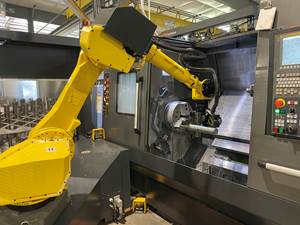School Shops Aren't What They Used To Be
I have fond memories of my junior and senior high school shop classes. These classes helped me realize that I had the capability to build things and taught me how to be patient when working on a project.
Share





I have fond memories of my junior and senior high school shop classes. These classes helped me realize that I had the capability to build things and taught me how to be patient when working on a project. This has carried over into just about everything that I do today. The classes gave me self-confidence.
In a typical industrial arts metal or wood shop, students were exposed to design, materials, machine operation, fabrication and finishing. The projects were typically oriented toward incorporating the aforementioned, and they were taken home and proudly shared with parents. I still use the tie rack that I made in seventh grade wood shop.
In todayŌĆÖs schools, most of the industrial arts shops have been transformed into technology laboratories. The most noticeable difference between the shop of yesterday and the lab of today is the presence of personal computers. This is really no surprise, as all areas of our lives have also realized this difference. Another difference is that in many middle schools, technology education is a subject that all students take. This was not the case when I was in school; back then, the boys took shop and the girls took home economics.
Manufacturing has changed in much the same way. Technology has advanced rapidly, and the skill sets of workers are different from what they were 20 to 30 years ago. The change in school technology laboratories allows students to get a survey experience of many technologies, including manufacturing, graphic design, power and transportation, aviation, biomedical, and communications, to name a few. Students are also working in pairs and teams, and there are efforts to link what they are learning to educational standards. This environment is excellent for applying academics and cementing concepts.
Youth who have been entering school for the past decade have not known life without personal computers and handheld video games. They have the innate ability to deal with a full computer screen of information, rather than just focusing on one part of the screen. The transition has been made from analog thinking to digital thinking. Youth view technology differently from how adults view it. Adults may use a computer application with a goal of learning; for kids, learning is the application. The ease with which youth embrace new technology is fueling the multimedia explosion. It has been found that the best learning comes from passion instilled by teachers and felt by students. This passion is invoked by students applying what they have been exposed to academically in a technology education lab. They understand academics because they have an opportunity to create a healthy learning environment in which to apply the knowledge.
In todayŌĆÖs middle schools, there are thousands of CAD/CAM/CNC modules in which students get a chance to design a part, create a tool path and machine the parts. While the intention is not to make machinists out of every student who goes through the module, there is an opportunityfor them to experience the process of design and manufacture, as well as relate math and science from other classrooms. Additionally, the use of technology to solve problems and working together in teams exposes students to skill sets that are critical to success later in life and add benefit to future employers.
The use of technology in the ŌĆ£school shopsŌĆØ of today provides interactive technology that enables students to learn faster and motivate them to explore new subjects. This advancement is affecting the future workers of tomorrow, your future employees. It is important to be aware of what is going on in your local schools and support the continued use of technology in those schools.
Related Content
Inside Machineosaurus: Unique Job Shop with Dinosaur-Named CNC Machines, Four-Day Workweek & High-Precision Machining
Take a tour of Machineosaurus, a Massachusetts machine shop where every CNC machine is named after a dinosaur!
Read MoreHow I Made It: Amy Skrzypczak, CNC Machinist, Westminster Tool
At just 28 years old, Amy Skrzypczak is already logging her ninth year as a CNC machinist. While during high school Skrzypczak may not have guessed that she’d soon be running an electrical discharge machining (EDM) department, after attending her local community college she found a home among the “misfits” at Westminster Tool. Today, she oversees the company’s wire EDM operations and feels grateful to have avoided more well-worn career paths.
Read MoreSame Headcount, Double the Sales: Successful Job Shop Automation
Doubling sales requires more than just robots. Pro Products’ staff works in tandem with robots, performing inspection and other value-added activities.
Read MoreShop Tour Video: You've Never Seen a Manufacturing Facility Like This
In the latest installment of our “View From My Shop” series, explore Marathon Precision’s multi-process approach to manufacturing, where blacksmiths and hand-forged dies meet state-of-the-art CNC machining. Discover how restoring classic muscle cars and building custom art projects creates a dynamic shop culture — and draws top talent to this unique and innovative metalworking facility.
Read MoreRead Next
AMRs Are Moving Into Manufacturing: 4 Considerations for Implementation
AMRs can provide a flexible, easy-to-use automation platform so long as manufacturers choose a suitable task and prepare their facilities.
Read MoreMachine Shop MBA
Making Chips and 91╩ėŲĄ═°šŠ╬█ are teaming up for a new podcast series called Machine Shop MBA—designed to help manufacturers measure their success against the industry’s best. Through the lens of the Top Shops benchmarking program, the series explores the KPIs that set high-performing shops apart, from machine utilization and first-pass yield to employee engagement and revenue per employee.
Read More

















